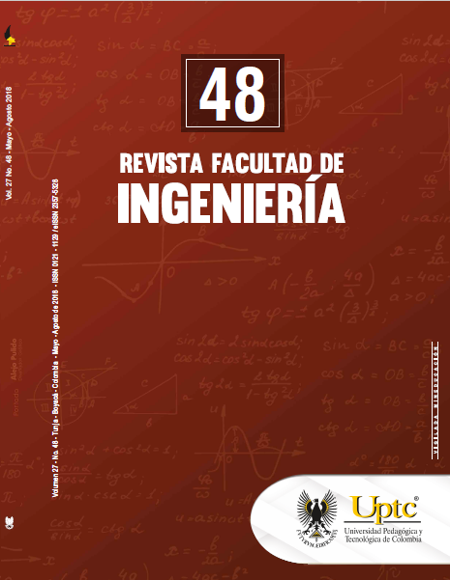Morphology, mechanical strength and degradation of polyhydroxyalkanoate scaffolds

Abstract
Tissue engineering (TE) seeks to improve the unsatisfactory development of implants and medical procedures to solve bone and cartilage injuries. TE aims at regenerating tissues using cell growth platforms (scaffolds), which may consist of natural polymers such as polyhydroxyalkanoate (PHA). PHA is an innovative material useful in medical applications due to its degradation capability and bacterial origin that allows large-scale production and control final properties. In this research, we developed commercial PHA scaffolds using the lyophilization technique with a factorial experimental design. We used dichloromethane as PHA solvent, tergitol as surfactant, and liquid nitrogen (N2) for the freezing process. We characterized the PHA by Fourier-transform infrared spectroscopy (FTIR) and thermogravimetric analysis (TGA); and the scaffolds by scanning electron microscopy (SEM) and mechanical compression and hydrolysis degradation tests. The characterization of the PHA indicated that the material is a mixture of PHA and polylactic acid (PLA). The results showed a suitable pore distribution for migration of chondrocytes through the scaffold, in addition to a behavior similar to that of the articular cartilage, although it presented lower mechanical strength. Also, the scaffolds displayed mass loss in a non-linear way related to the percentage of PHA present in the sample. In conclusion, PHA scaffolds have a potential use in tissue engineering for restoring articular cartilage.Keywords
articular cartilage, polyhydroxyalkanoate, scaffolds, tissue engineering
References
- Departamento Administrativo Nacional de Estadísticas (DANE), “Información estadística por discapacidad,” Total_nacional, 2010. [Online]. Available: http://www.dane.gov.co/index.php/poblacion-y-demografia/discapacidad.
- E. C. Chan, “Sustitutos de tejido óseo,” Orthotips, vol. 10(4), pp. 208–217, 2014.
- N. Zapata, N. Zuluaga, S. Betancur, et al., “Cultivo de tejido cartilaginoso articular: Acercamiento conceptual,” Rev. Esc. Ing. Antioquia, vol. 8, pp. 117–129, Dec. 2007.
- C. Navarro Hernández et al., “Proyecto multidisciplinario para la fabricación de prótesis ortopédicas de bajo costo,” Ideas Concyteg, vol. 6(72), pp. 788–798, 2011.
- A. C. Rios, D. Hotza, G. V Salmoria, et al., “Fabricación de andamios de hidroxiapatita por impresión tridimensional,” Rev. Lat. Metal. y Mater., vol. 34(2), pp. 262–274, 2013.
- M. You, et al., “Chondrogenic differentiation of human bone marrow mesenchymal stem cells on polyhydroxyalkanoate (PHA) scaffolds coated with PHA granule binding protein PhaP fused with RGD peptide,” Biomaterials, vol. 32(9), pp. 2305–13, Mar. 2011. DOI: https://doi.org/10.1016/j.biomaterials.2010.12.009. DOI: https://doi.org/10.1016/j.biomaterials.2010.12.009
- D. Yalçin, T. Baykal, Đ. Açikgöz, et al., “Fourier Transform Infrared (FT-IR) Spectroscopy for Biological Studies. Review.” G.U. J. Sci., vol. 22(3), pp. 117-121, 2009.
- I. PerkinElmer, “A Beginner’s Guide,” Thermogravimetric Analysis (TGA), 2015.
- M. P. Arrieta, E. Fortunati, F. Dominici, et al., “Multifunctional PLA-PHB/cellulose nanocrystal films: processing, structural and thermal properties.,” Carbohydr. Polym., vol. 107, pp. 16–24, Jul. 2014. DOI: https://doi.org/10.1016/j.carbpol.2014.02.044. DOI: https://doi.org/10.1016/j.carbpol.2014.02.044
- Y.-X. Weng, L. Wang, M. Zhang, et al., “Biodegradation behavior of P(3HB,4HB)/PLA blends in real soil environments,” Polym. Test., vol. 32(1), pp. 60–70, Feb. 2013. DOI: https://doi.org/10.1016/j.polymertesting.2012.09.014. DOI: https://doi.org/10.1016/j.polymertesting.2012.09.014
- S. V. Naveen, I. K. P. Tan, Y. S. Goh, et al., “Unmodified medium chain length polyhydroxyalkanoate (uMCL-PHA) as a thin film for tissue engineering application – characterization and in vitro biocompatibility,” Mater. Lett., vol. 141, pp. 55–58, Feb. 2015. DOI: https://doi.org/10.1016/j.matlet.2014.10.144. DOI: https://doi.org/10.1016/j.matlet.2014.10.144
- M. P. Arrieta, E. Fortunati, F. Dominici, et al., “Bionanocomposite films based on plasticized PLA-PHB/cellulose nanocrystal blends,” Carbohydr. Polym., vol. 121, pp. 265–75, May. 2015. DOI: https://doi.org/10.1016/j.carbpol.2014.12.056. DOI: https://doi.org/10.1016/j.carbpol.2014.12.056
- M. P. Arrieta, J. López, A. Hernández, et al., “Ternary PLA–PHB–Limonene blends intended for biodegradable food packaging applications,” Eur. Polym. J., vol. 50, pp. 255–270, Jan. 2014. DOI: https://doi.org/10.1016/j.eurpolymj.2013.11.009. DOI: https://doi.org/10.1016/j.eurpolymj.2013.11.009
- Q. Guan, “Fabrication and Characterization of PLA, PHBV and Chitin Nanowhisker Blends, Composites and Foams for High Strength Structural Applications,” Master Thesis, Mechanical Engineering, University of Toronto, 2013. DOI: https://doi.org/10.1007/s10924-013-0625-8
- G. Widmann, “Informaciones para los usuarios de los sistemas de termoanálisis METTLER TOLEDO,” UserCom, pp. 1–20, 2001.
- C. Ning, L. Zhou, and G. Tan. “Fourth-generation biomedical materials,” Mater. Today, vol. 19 (19, pp. 2–3, Jan. 2016. DOI: https://doi.org/10.1016/j.mattod.2015.11.005. DOI: https://doi.org/10.1016/j.mattod.2015.11.005
- C. M. Hernández, “Estudio mecánico, histológico e histomorfométrico del regenerado de cartílago a partir de injertos de periosto invertido,” Doctoral Thesis, Universidad Autónoma de Barcelona, 2015.
- J. J. Pavón Palacio, A. Pesquet, M. Echeverry Rendón, et al., “Procesamiento, caracterización y ensayos biológicos de scaffolds poliméricos naturales y sintéticos para ingeniería de tejido óseo y cartilaginoso,” Rev. Politécnica, vol. 10 (19), pp. 9–19, 2014.
- N. E. Cedeño Lamus, J. L. Acosta Collado, and N. Antoniadis Petrakis, “Análisis histológico de los injertos de cartílago autólogos envueltos en fascia,” Cirugía Plástica Ibero-Latinoamericana, vol. 37(2), pp. 111-121, 2011. DOI: https://doi.org/10.4321/S0376-78922011000200002